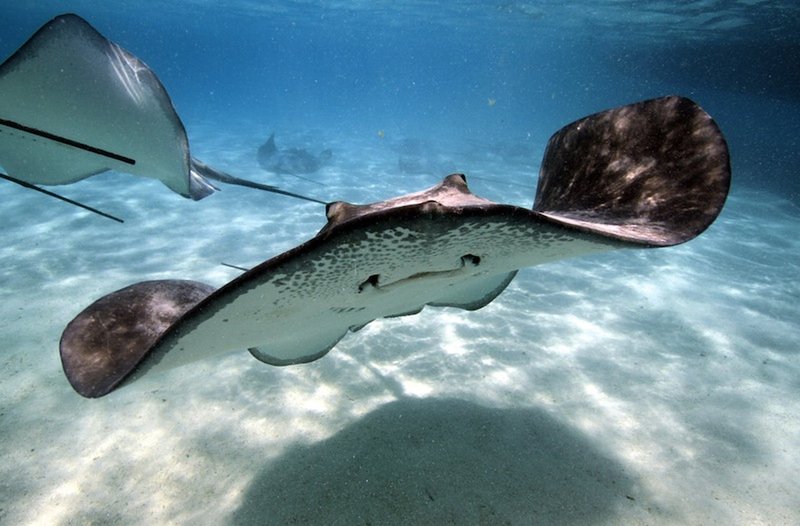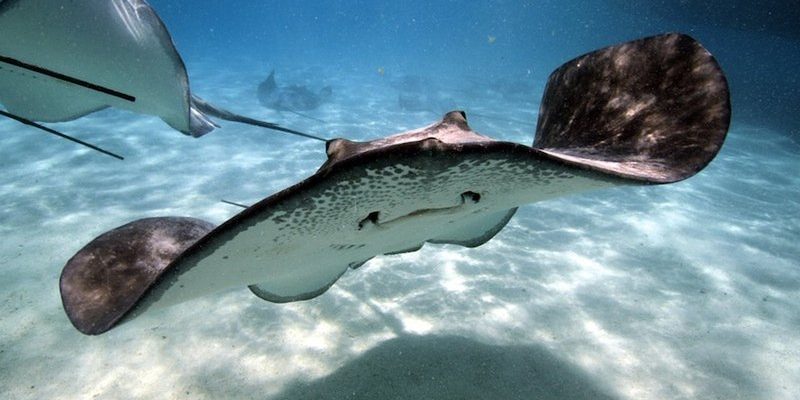
Whether you’ve heard the term “stingray” thrown around or haven’t a clue what they really are, let me explain. Stingrays belong to a group of fish known as elasmobranchs, which also includes sharks. As relatives of sharks, they share many similarities, but they also have some unique features that set them apart. So, grab your metaphorical scuba gear, and let’s dive into the world of stingrays!
1. Stingray Species Variety
You might be surprised to learn that there are over 200 species of stingrays swimming in our oceans! Each species has its own unique traits and habitats. For example, the Southern stingray is commonly found in shallow coastal waters, while the Manta ray can be spotted in deeper oceanic regions.
Most stingrays prefer warmer waters, which means they like to hang out in tropical and subtropical areas. Some popular types include:
- Southern stingray
- Atlantic stingray
- Ocellaris stingray
- Spotted eagle ray
This diversity gives each species its own special characteristics, such as different colors, sizes, and behaviors.
2. Anatomy and Adaptations
Stingrays have a unique flat body shape, which sets them apart from other fish. This design helps them glide smoothly along the ocean floor, where they often search for food. Their bodies are also equipped with a special adaptation: a cartilaginous skeleton that makes them lighter and more flexible than bony fish.
Another cool aspect of their anatomy is their electroreceptors. These allow stingrays to sense electric fields generated by potential prey, like fish buried in the sand. Imagine being able to “feel” your next meal without needing to see it!
Their tails are perhaps the most notorious part of their anatomy. Equipped with a sharp stinger, stingrays use their tails defensively. Here’s the thing, though: they are usually quite docile and won’t sting unless provoked.
3. Stingray Feeding Habits
Feeding is where stingrays truly shine! They have a varied diet consisting mainly of small fish, crustaceans, and mollusks. When hunting, they use their flat bodies to bury themselves in the sand, waiting patiently for unsuspecting prey to swim by.
Once they sense a meal, stingrays propel themselves out of the sand. Their mouths are located on the underside of their bodies, allowing them to quickly snack on their find. Funny enough, they often use suction to draw in their food. Imagine slurping noodles—stingrays have a similar technique when they eat!
Some species even have specialized teeth. For example, the spotted eagle ray has flat, plate-like teeth that help crush hard-shelled prey like clams and crustaceans.
4. The Stingray’s Defense Mechanism
Let’s talk about the infamous stingray sting. While some people might think of stingrays as dangerous due to their venomous tail, the reality is quite different. Stingrays typically prefer to avoid conflict. When threatened, a stingray will often choose to swim away rather than attack.
However, if they feel cornered, they will defend themselves. Their tail has a sharp spine coated in venom, which can cause significant pain to potential predators. It’s essential to give stingrays plenty of space. If you happen to step on one while wading in the ocean, they often react defensively, so shuffling your feet can help prevent surprising these creatures.
Understanding their behavior helps us appreciate these animals more and recognize that they’re not out to get us!
5. Stingrays and Their Habitats
Stingrays thrive in various habitats, mainly near coastlines and coral reefs, where food is plentiful. They often prefer sandy or muddy ocean floors, making them easy to spot—or sometimes easy to miss, if they’re buried!
You might find different species in different environments:
- Coastal waters: Many stingrays, like the Southern stingray, thrive in shallow waters near beaches.
- Coral reefs: Species like the Manta ray are commonly seen in vibrant coral environments.
- Open ocean: Some stingrays, such as the Mobula species, are known to roam the depths.
Protecting their habitats is crucial for their survival. As more coastal development and pollution occur, the delicate balance of these ecosystems can be threatened.
6. Reproduction and Lifespan
Stingrays have some unique reproductive traits that make them stand out. They are ovoviviparous, meaning they give birth to live young instead of laying eggs. After a gestation period that can last several months, female stingrays give birth to anywhere from two to a dozen baby stingrays, known as pups.
The pups are born fully formed and ready to swim, often finding shelter in nearby seagrass beds or sandy areas to avoid predators. Interestingly, their lifespan varies by species, but many can live between 15 to 25 years in the wild, depending on environmental factors and threats.
Here’s the thing: the survival of young stingrays often hinges on their ability to hide from predators like sharks and larger fish during their vulnerable early days.
7. Stingray Conservation Status
Unfortunately, not all stingray species are thriving. Overfishing, habitat loss, and pollution have led to declines in some populations. For instance, the Manta ray is now considered vulnerable on the IUCN Red List. Protecting their habitats and ensuring sustainable fishing practices are crucial for their survival.
Conservation efforts are ongoing in many regions. Marine protected areas (MPAs) help safeguard their habitats, while initiatives like educational programs aim to raise awareness about these fascinating creatures. By understanding and supporting these efforts, we can help protect stingrays for future generations.
8. Their Role in Ecosystems
Stingrays play an essential role in maintaining the balance of their ecosystems. By feeding on smaller fish and invertebrates, they help regulate populations, allowing for a healthy marine environment. This, in turn, supports a diverse range of marine life.
Think of them as nature’s cleanup crew, keeping the ocean floor tidy by consuming dead or decaying matter. The presence of stingrays is an indicator of a healthy ecosystem. As they thrive, so do the species that depend on a balanced environment.
Ultimately, healthy stingray populations benefit not just the ocean but also the communities that depend on fishing and tourism.
9. Stingrays in Culture and Media
Stingrays have captured our imaginations in various ways, from documentaries showcasing their enchanting beauty to popular films featuring thrilling underwater adventures. One notable movie is “Finding Nemo,” where a stingray character teaches kids about the ocean. You might even encounter them at aquariums, where they often draw crowds due to their unique appearance and behavior.
Culturally, some coastal communities hold deep respect for stingrays, viewing them as symbols of grace and mystery. This reverence often leads to conservation efforts that promote coexistence with these remarkable creatures.
Stingrays remind us of the beauty of the ocean and the importance of preserving its wonders.
10. How to Safely Interact with Stingrays
If you’re lucky enough to encounter stingrays while snorkeling or diving, here are a few tips to safely enjoy the experience:
- Keep your distance: Admire stingrays from a safe distance. Observing their natural behavior is much more rewarding.
- Move slowly: If you’re in their habitat, be cautious and avoid sudden movements—this will help you avoid startling them.
- Shuffle your feet: When wading in shallow waters, shuffle your feet to alert stingrays to your presence and reduce the chance of stepping on one.
Respectful interactions create memorable experiences and help ensure the safety of both you and these incredible creatures.
In conclusion, stingrays may glide silently, but they are full of surprises beneath the waves. From their unique adaptations and fascinating feeding habits to their roles in the marine ecosystem, they’re more than just creatures of beauty; they’re essential components of our ocean world. Understanding and appreciating these graceful inhabitants will hopefully inspire a deeper respect for nature and a commitment to protecting it.

